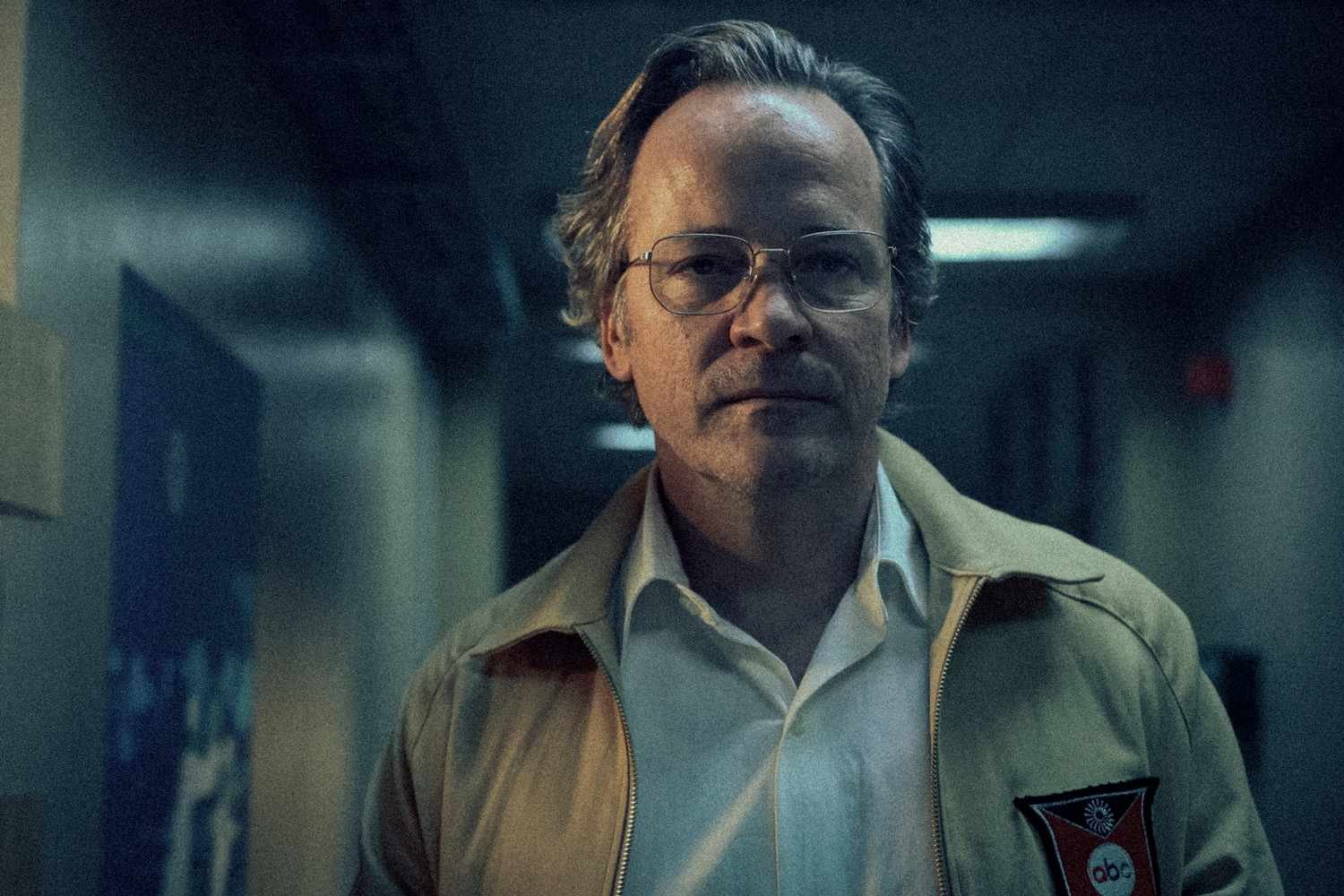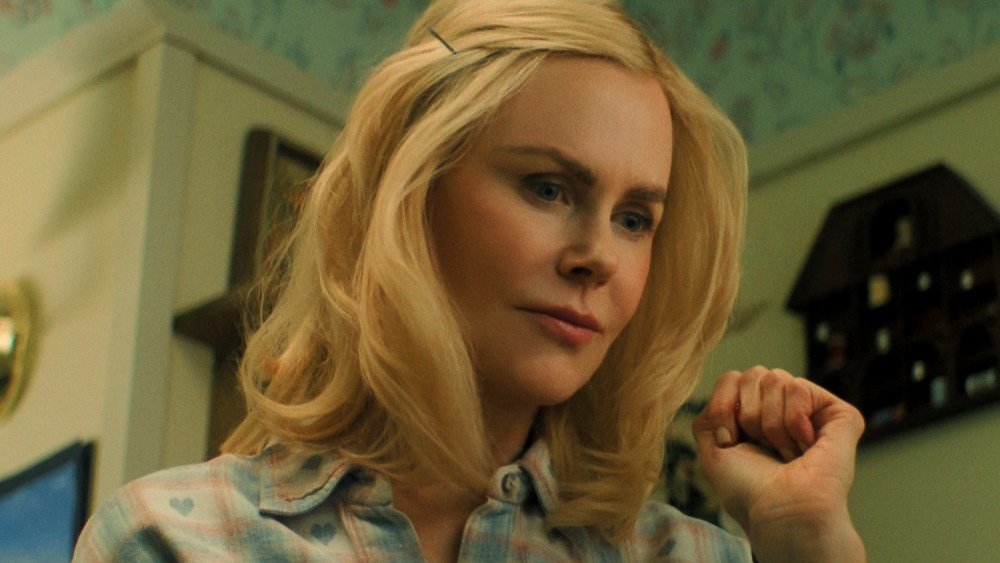
:max_bytes(150000):strip_icc():format(jpeg)/peter-sarsgaard-september-5-121324-70902e44f4a74e9fae253a43a33c2878.jpg)
When the Munich Olympics kicked off in 1972, just three decades after the end of Germany’s Nazi regime, the games were set to be a symbol of newfound peace for the country.
That all changed when an armed militant group, the Black September Organization (BSO), broke into the Olympic Village and took 11 members of Israel’s team hostage.
This is the historical event that the Oscar-nominated thriller September 5 is based on. Directed by Tim Fehlbaum, the film follows the ABC Sports team during and in the immediate aftermath of the horrific event, during which they dealt with immediate ethical questions about how much of the attack could be televised.
The BSO members who attacked the Israeli athletes were seeking the release of over 300 imprisoned Palestinians, per the Munich attack’s digital memorial website. The BSO first killed two athletes and took the other nine hostage. David Clay Large, a senior fellow at the Institute of European Studies at the University of California, Berkeley, told NPR that the BSO killed all of the remaining nine hostages before the German police killed the terrorists.
Remarkably, the ABC Sports team — then led by Roone Arledge (played by Peter Sarsgaard) — covered the entire incident as it unfolded, making the decision to broadcast live. At 3:24 a.m. the morning after hostages were taken, sportscaster Jim McKay announced: “They’re all gone.”
At September 5‘s center is the decision to show violence live on TV. It’s also an underdog tale, showcasing sports journalists as they take the lead on “hard news” for the first time. Following the Munich Olympics, ABC and its staffers went on to win a combined 29 Emmys for their coverage.
Here is everything to know about the real events that inspired the Oscar-nominated movie September 5.
What was the Black September Organization (BSO)?
James Drake/Sports Illustrated via Getty
The Black September Organization was a Palestinian militant group founded in 1970. Their name comes from the Black September conflict — also referred to as the Jordanian Civil War — which took place during September 1970, per Brookings.
The armed conflict was between the Jordanian military, headed by King Hussein, and the Palestine Liberation Organization (PLO), led by Palestinian political leader and PLO chairman Yasser Arafat. While the main Black September conflict occurred in September 1970, it continued through July 1971.
Following the Munich Olympics, the BSO was only sustained until 1973, when it was shut down by the Palestinian Liberation Organization (PLO), according to Israeli historian Benny Morris. Attackers claiming to be members of the BSO planned and committed other plots until 1981.
What happened during the 1972 Munich Olympics attack that inspired September 5?
picture-alliance/dpa/AP
The film September 5 is based on real events that took place on Sept. 5, 1972 and were broadcast by ABC Sports.
During the summer Olympics of 1972 which took place in Munich, a group of Palestinian militants who called themselves the Black September Organization (BSO) broke into the Olympic Village and kidnapped 11 Israeli athletes, per NPR.
The BSO members were acting in pursuit of the release of over 300 Palestinian hostages being held captive in Israel, per their demands letter posted on the attack’s memorial website. They first killed two athletes and took the other nine as hostages. Later, in an attempt by the German police to rescue the hostages, the remaining nine were killed.
There are conflicting reports on the end of the standoff, but NPR reported that the terrorists were told that they could take a plane with their hostages to Cairo. Their plan was for West German police officers disguised as plane crew to overpower the BSO. That evening, the gunmen were flown by helicopter with their hostages to the Fürstenfeldbruck air base, not far from Munich, where the plane to Cairo was waiting.
Unfortunately, the German plan went awry, per the memorial website. The planned police officers refused to take part and the backup snipers lacked proper equipment and training. That said, Large told NPR, “[The police officers] ended up shooting five of the eight commandos, but not before the commandos then killed in cold blood all of the remaining nine hostages.”
All of the 11 people killed by the BSO were affiliated with Israel’s Olympic team. Following their initial assault, the terrorists’ nine hostages were referee Yossef Gutfreund, track coach Amitzur Shapira, shooting coach Kehat Shorr, weightlifters Ze’ev Friedman and David Berger, wrestlers Eliezer Halfin and Mark Slavin, fencing coach Andre Spitzer and weightlifting judge Yakov Springer. The two people first killed by the BSO were Yossef Romano and Moshe Weinberg.
In 2022, 50 years after the attack, Germany officially issued an apology and compensation to the athletes’ families, many of whom had placed blame on German authorities for a lack of protection of Israeli athletes, per The New York Times.
Who are the characters in September 5?
Paramount Pictures
In September 5, each of the characters are based on real people.
Geoffrey Mason (Jon Magaro), Marvin Bader (Ben Chaplin) and McKay (who appears through archival footage) were all real people working for ABC Sports on Sept. 5, 1972.
Mason was the head of the control room in Munich, per The Hollywood Reporter, and Bader was an executive at ABC Sports. The fictional translator Marianne Gebhardt (Leonie Benesch) is an amalgamation of many translators who assisted the crew during the attack, per Gold Derby.
Who was Roone Arledge?
AP
The central character in September 5 is Roone Arledge, played by Peter Sarsgaard.
He was the president of ABC Sports at the time of the 1972 Munich attack and eventually became the president and chairman of ABC News. In his obituary published in The New York Times, the publication called him “the most important behind-the-scenes figure in the television coverage of the major events of the last half century.”
After the initial attack, Arledge supervised ABC’s coverage for the 17 hours that followed, including McKay’s announcement that all athletes taken hostage had been killed.
On air, the sportscaster said, “When I was a kid my father used to say ‘Our greatest hopes and our worst fears are seldom realized.’ Our worst fears have been realized tonight. They have now said there were 11 hostages; two were killed in their rooms this morn— yesterday morning, nine were killed at the airport tonight. They’re all gone.”
Arledge made history by deciding to maintain close coverage of the terrorist attack, as painstakingly shown in September 5. ”The cardinal error is to be there with the only live camera and then miss whatever might happen,” Arledge said, per The New York Times.
The TV executive, along with McKay and ABC at large received acclaim for their work in Munich, including 29 Emmy Awards. Arledge died in 2002 at age 71 and continues to be heralded as one of the most influential figures in the history of television sports.
Who was Geoffrey Mason?
American Broadcasting Companies via Getty
Mason was the head of the TV control room during the 1972 Munich Olympics. Fifty-two years later, John Magaro played Mason in September 5.
During the attack, when a then-unknown number of Israeli athletes were taken hostage at the Olympic Village, it was in large part Mason’s choice to decide what would go on air, per The Hollywood Reporter.
Working alongside Arledge and fellow ABC journalists, Mason contributed to turning the story into one of the biggest news pieces of all time by negotiating optimal time slots and working to get ABC crewmembers access to the Olympic Village.
“I cannot begin to tell you how fast events were unfolding in that room,” he told THR in 2024. “Every minute brought a new challenge.”
Did the attack that inspired September 5 actually end up on television?
AP
Yes, just like in September 5, the 1972 Munich terror attack was broadcast live on television. At the end of the film, an epilogue explains that it was the first time such an event had occurred in history.
ABC’s coverage was viewed by an audience of 900 million people, making it one of the most-viewed broadcasts of all time.
“It was a roller-coaster ride the entire day,” Mason told TIME. “We were just doing our job, and we had to get [the story] right.”
RELATED POSTS
View all




